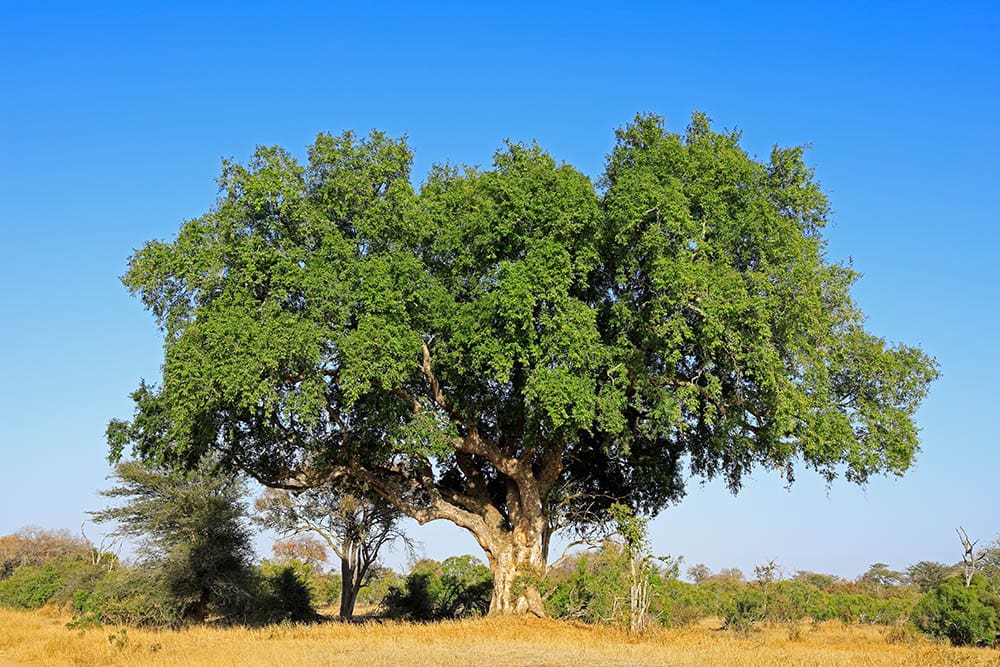How Fast Do Fig Trees Grow? Care & Tips
-
Brooke Bundy
- Last updated:

Fig trees don’t grow very quickly. You can expect your tree to gain up to 12 inches per year, and it’ll often take 3-5 years before you see fruit. Your first crop typically isn’t the tastiest either, so you might not even eat your first harvest. However, planting fig trees eventually does pay off with decadent fruit and a sturdy tree that can live up to 200 years. While you should fertilize your fig tree to encourage growth, you shouldn’t over-fertilize it because that’ll result in a weak tree. Here’s how to care for your fig tree so that it stays healthy for the long haul.

How to Care for Your Fig Tree

| Common Name: | Fig |
| Scientific Name: | Ficus carica |
| Exposure: | Full sun |
| Zone: | 5-11 |
Fig trees originate from the Mediterranean region. They thrive in similar environments that are hot and dry. You can grow them in cooler zones, but they’ll do their best in zones 8+. Planting a fig tree in a cooler climate might result in slower growth than normal. Since the root system can spread horizontally and burrow down deep into the earth, you should plant your fig tree at least 20 ft. away from other trees and structures.
Fig trees prefer neutral to slightly acidic soil. The plant would benefit from compost that mostly consists of organic matter such as orange peels, coffee grounds, and crushed eggshells, as opposed to woody-based compost full of leaves and twigs, although you can still add some to the heap to help balance the pH.
While the fig tree enjoys a Mediterranean climate, you shouldn’t let the soil dry out. Opt for well-draining soil that’s watered at least once a week.
How to Encourage Growth on Your Fig Tree
Your fig tree might develop what’s known as a breba crop, which is when new growth occurs on old branches. You might receive breba only during the first year your tree produces a harvest. This first harvest isn’t likely to taste very good, so you’re probably going to want to discard these inaugural fruits. In subsequent years, the breba crown your fig tree as the first fruits that grow in spring, followed by the actual harvest in August. Both the breba and the figs should be tasty after the first round.
To encourage real fruit growth, you should prune back the breba once it’s finished to make room for your actual crop in late summer. Leave a few branches unpruned if you desire breba for next year.

Fig trees lie dormant during the winter, which is one reason they grow so slowly. You should only fertilize your fig tree every 4 weeks during the growing season in the spring and summer. Fertilizing will accelerate your plant’s growth but be careful not to over-fertilize because that can lead to a woody tree that doesn’t produce much fruit.
Pruning back half of your fig tree when it’s first transplanted will help it strengthen its roots for future growing seasons. In the years to follow, prune your tree during the dormant winter months, or early spring once the breba have appeared for best results. Don’t prune in the summer because it will obstruct the growth and make the tree “bleed” white sap.

Conclusion
With proper care, you’ll be able to grow a fig tree that’ll likely survive your great-grandchildren’s era. Although you should fertilize your fig tree to encourage growth, fig trees grow slowly and it’s pretty common not to glean fruit for the first 3-5 years of its life. Even so, the first breba is likely not to taste very good, so you might have to prune these branches back and wait until the second growing season to be able to enjoy your harvest. Once your tree is established, however, you’ll be gifted with a tree that’ll give your fresh figs for life.
Featured Image Credit: EcoPrint, Shutterstock